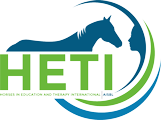Molly Jenkins Associate Editor of HETI Journal : International Research and Practice gives some tips on how to submit a manuscript to the journal category ‘Theory and Practice’:
We invite you to submit a manuscript to the HETI Journal, a scholarly, peer-reviewed publication seeking to advance knowledge about equine interactions in human services, therapies, activities, and therapeutic/adaptive riding. The purpose of scholarly journals is to optimize the body of work within a particular discipline through theoretical, practical, and evidence-based contributions. Notably, our journal is intended to be “practitioner-near,” meaning that the articles we publish will provide practitioners working with horses in education and therapy with research, tangible support, and shared ideas for practice and program development. While some may be hesitant to present a manuscript for publication, our process is streamlined and user-friendly in order to encourage a diverse range of submissions. As an international, practitioner-focused journal, we accept papers on a rolling basis from both experienced and first-time authors across the globe. Chiefly, sharing your substantial knowledge with the broader community is a concrete way for you to make a meaningful contribution to our areas of work with human-horse interactions.
The HETI Editorial Team welcomes you to share your work through the following journal categories: 1) original research studies and reports; 2) comprehensive or systematic reviews of the current research relating to a certain topic; 3) a case study (or studies) of human-horse interactions in your educational or therapy practice; 4) an in-depth discussion of theory and practice, in the context of a particular area or subject; and 5) a letter to the editor regarding articles featured in the HETI Journal and similar, scholarly publications. What follows is an overview of the Theory and Practice category.
A submission under the Theory and Practice category allows you and any fellow authors to discuss a specific topic in our growing field(s) by exploring its a) relevance to practice and b) underlying theoretical framework. This section is intentionally broad in scope in order to feature and reflect the diversity of work involving horses and other equines in human services. For example, you may wish to provide an overview of your current clinical practice or educational program, including the theories and previous research that informs your work. You may use this opportunity to describe a research gap in the literature you have observed and hope to fill. Manuscripts related to the horses themselves – such as selection, assessment, behavior, and ethical welfare standards – are also encouraged. Essentially, through increased understanding of a particular topic, this section is designed to enrich knowledge, practice, and future inquiry regarding human-horse interventions and relationships.
A Theory and Practice manuscript will contain typical article sections, including an abstract (i.e., a summary); an introduction; a main body of text, divided into sections; and a conclusion. The main body of the text should include a discussion of relevant theory, a brief review of the current literature, and a detailed description of a program or intervention (or how the topic relates to practice).
You can find additional information and manuscript guidelines – including word counts, style requirements, and submission instructions by clicking here.
We hope you will consider sending your exciting work and ideas to the HETI Journal. If you have any questions, please do not hesitate to be in touch at [email protected].
Molly Jenkins (USA)
Associate Editor
University of Denver
